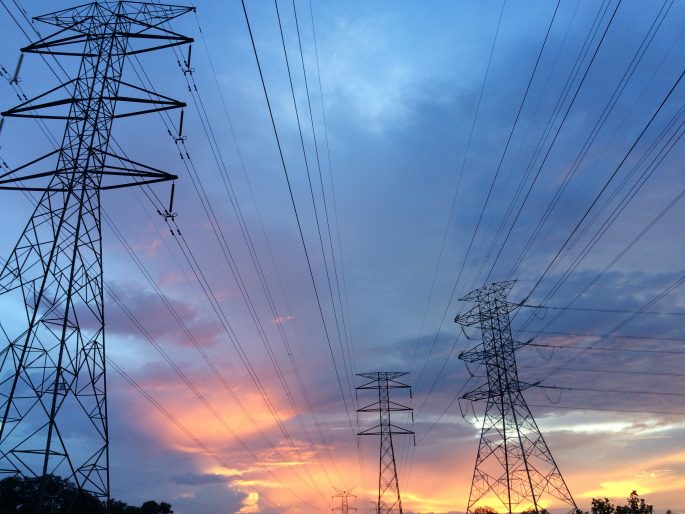Fossil-fuel-fired power plants are creeping closer to stranded asset status. The newly released framework for Canada’s looming clean electricity regulations (CER) makes it clear that utilities and other entities selling power into public transmission and distribution networks have about 12 years to cut the greenhouse gas (GHG) emissions from their production processes down to near-zero levels.
The January 1, 2035 deadline for compliance is expected to be a persuasive argument against bringing new fossil-fuel-fired generation online in the interim. Rather, suppliers will need to focus on how to retrofit or replace existing gas- and coal-fired plants. Meanwhile, the framework suggests industries and large institutional facilities with gas-fired cogeneration will not be subject to CER initially, provided they do not sell any electricity into the grid.
“Canada is ready to take the next step in fighting climate change by developing an electricity grid that is net-zero emissions by 2035,” declares Steven Guilbeault, Canada’s Minister of Environment and Climate Change. “This is a key part of our government’s plan for a healthy environment and healthy economy.”
Although it is missing some central details — such as emissions intensity thresholds and exact qualifications for allowed exemptions or extensions to the compliance deadline — the framework sets outs the general rules that will guide the pursuit of a net-zero electricity grid.
The government is accepting comments until August 17, 2022. This follows an earlier round of consultations last winter, which is reported to have drawn more than 160 written submissions and “numerous discussions with key interested parties” including provincial/territorial governments, Indigenous communities and industry.
“Achieving a net-zero electricity supply is key to reaching Canada’s climate targets in two ways,” the preamble to the framework states. “First, it will reduce GHG emissions from production of electricity. Second, using clean electricity instead of fossil fuels in vehicles, heating and industry will reduce emissions from those sectors too.”
Clean energy proponents maintain the regulations send an important signal to the market.
“A regulation like this can provide certainty to industry, to investors, so that they can start investing in the right type of assets to get to a net-zero grid by 2035,” says Binnu Jeyakumar, director of clean energy with the research and policy think tank, the Pembina Institute. “We have not had that kind of certainty in our electricity system. It can be a game-changer.”
Details lacking, but potentially problematic flexibilities flagged
As proposed, the regulations will apply to any fossil-fuel-fired generating unit above a yet-to-be-specified “small megawatt” capacity that produces electricity sold in a regulated system. Almost all designated units will have to meet an emissions performance standard — expected to be “set at a stringent, near-zero value in line with direct emissions from well-performing, low-emitting generation” — by Jan. 1, 2035 at the latest.
However, there would be slightly different rules for units commissioned before 2025, which would be bound by the new near-zero emissions standard as soon as they reach the end of their prescribed life. For now, there is no definition or mechanism to stipulate what a prescribed life is, but the framework suggests it could be based on a fixed number of years from a unit’s date of commissioning.
Once they hit the applicable deadline, regulated units that cannot stay within the mandated emissions threshold would be taken out of service. Those that can comply would have to financially compensate for any residual emissions below the maximum allowable threshold, likely via the carbon tax rate or the purchase of carbon offsets.
Some criteria for exemptions or circumstances for extending the deadline for compliance are also outlined. Notably, fossil-fuel-fired generation could be pressed into service without penalty during emergency situations defined as “extraordinary, unforeseen and irresistible”.
There could be some leeway for a unit to stay in service beyond its prescribed life to provide backup contingency for renewable generation, which would be tied to yet-to-be-defined annual limits on emissions and hours of operation. Finally, the framework proposes that “newer” natural gas units built before the adoption of the regulations could be allowed to operate for a “short prescribed period” past 2035, but neither “newer” nor “short prescribed period” are defined.
Jeyakumar points to a 900-megawatt (MW) gas-fired generating plant under construction in Alberta, which is scheduled to be commissioned in 2023, as an example of some of the CER’s potentially problematic flexibilities. She cautions the drafters of the regulations not to assume prospective investors won’t risk gambling on new fossil-fuel-fired facilities that lack abatement technologies in advance of 2035.
“One would have imagined that the carbon pricing itself should have sent a strong enough signal to deter that 900-MW gas-fired plant. So I think there is a need for stronger signals in the short term,” Jeyakumar muses. “Investments can happen in the next couple of years and, under the wording of the regulation framework, some of these plants can qualify for exemptions and can end up operating past 2035 without having to meet that standard.”
Energy efficiency and demand management complement zero-emissions goals
Currently, more than 80 per cent of Canada’s electricity comes from low-emitting sources, including nuclear, hydro-electric and other renewables. Alberta, Saskatchewan and Nova Scotia are the provinces most reliant on fossil-fuel-fired generation for base electricity load, while gas-fired peaking plants are a fixture of Ontario’s system to augment supply during periods of high demand.
The framework commits the CER to a “technology-neutral” stance on complying with 2035 low-emissions thresholds, which would allow for options such as transitioning to hydrogen or installing abatement technologies. As stated in the preamble, the CER is envisioned as a prompt for: “energy efficiency, demand-side management, dynamic pricing and a range of efficiency, abatement and non-emitting generating technologies such as: carbon capture and storage (CCS); solar; wind; geothermal; small modular nuclear reactors (SMRs); hydro; distributed energy systems; interties; and energy storage.”
Although there is nothing overtly promoting energy efficiency or demand management within the CER framework, net-zero and conservation advocates stress that it should be viewed as part of a package of complementary initiatives. The electricity grid will be transitioning away from reliance on fossil-fuel generation in sync with projected escalating electricity demand as consumers switch to electrified options for heating and transportation. In this, there is a presumed vacuum for provincial/territorial governments to fill.
“It’s less taxing on clean energy generation when demand is reduced, and several provincial utilities are not exploiting energy efficiency savings potentials,” observes Brendan Haley, director of policy with the advocacy and research organization, Efficiency Canada, which promotes the dual economic and environmental benefits of energy and water efficiency. “An energy efficiency resource standard would be a natural complement to the clean electricity standard, but these are typically implemented at provincial levels.”
“Provinces need to have a plan on how they are going to get to a net-zero grid by 2035,” Jeyakumar concurs. “Within that plan, it’s essential that it includes not only investments in renewable energy, but also programs to incentivize energy efficiency and demand-side management.”
Barbara Carss is editor-in-chief of Canadian Property Management.





